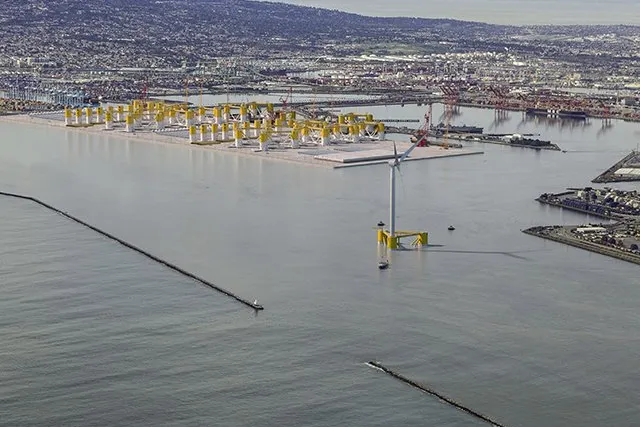Key US floating wind hub forges ahead despite Trump attacks
California funds first installment to build out $4.7bn Pier Wind to help it meet 25GW goal

California granted the Port of Long Beach its first $20m in funding to advance what is aimed to be the nation’s largest floating wind terminal.
The Golden State aims to install 25GW of floating wind in the Pacific Ocean off its central and northern coastlines BY 2045 but faces multiple hurdles, including a scarcity of adequate infrastructure.
Port of Long Beach, adjacent to the Port of Los Angeles in Southern California, has proposed its $4.7bn, 400-acre (162 -ha) Pier Wind terminal to serve as both assembly and staging port for the future industry.
“California’s offshore wind energy goals cannot be achieved without onshore development at port facilities like Pier Wind, which will create thousands of manufacturing jobs across the US,” said Long Beach Harbour Commission president Frank Colonna.
The CEC grant is being matched by an additional $11m from the port and will be used to complete engineering, environmental, business planning and community outreach requirements needed to begin construction on Pier Wind.
Humboldt Bay in Northern California, likewise tipped for floating wind, was granted $18.25m to advance its offshore wind heavy lift terminal project, while Port San Luis Harbour was granted $3m for a feasibility study on its future role in operations and maintenance.
“California is demonstrating its continued determination to be a clean-energy leader, despite the federal headwinds we’re facing this year,” said Adam Stern, executive director of trade group Offshore Wind California.
The Golden State is a renewables leader, but its goal of 100% clean grid by 2045 is facing multiple hurdles, not least a disproportionate capacity in solar that stresses its load balancing.
In what is famously dubbed the ‘duck curve’, the state’s 40GW of utility and residential solar capacity generate up to half the total load during the day but go dark in the night just as the early evening peak demand begins.
Wind power, both off and onshore, which typically picks up in the evening, is needed to meet this evening peak.
Floating wind will need to contend with 1,000-metre depths and lack of transmission and supply chain capacity.
The nascent sector is unlikely be impacted by Trump's hostility, though, as the sector will not see steel in the water for around a decade, according to analysts.
(Copyright)